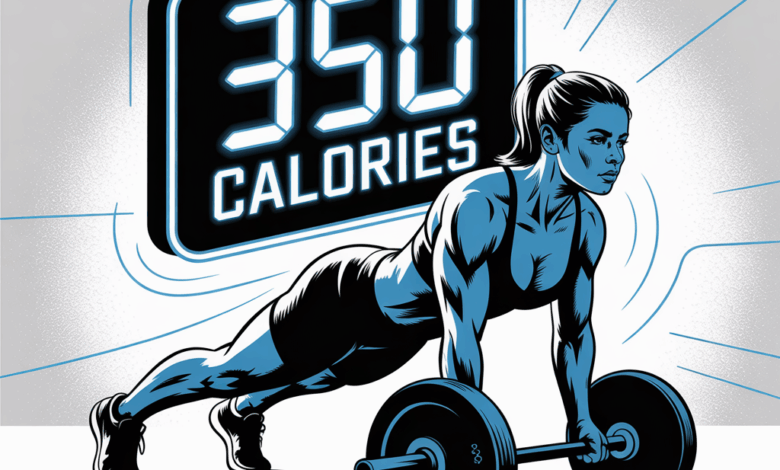How Many Calories Are Burned Doing Planks — Real Numbers & Practical Tips

Have you ever held a plank and wondered, “Am I actually burning calories or just practicing patience?” Whether you’re squeezing in a quick core workout between meetings or trying to level up your home routine, understanding how many calories are burned doing planks can help you plan smarter and stay motivated.
Why people love planks (and why they sometimes hate them)
Planks are the squat of the core world: simple, effective, and universally recommended. They require no equipment, scale to every fitness level, and build functional strength for posture, running, lifting, and daily life. But because planks are an isometric exercise — holding a position rather than moving through reps — the calorie burn is different from jumping jacks or running.
How many calories are burned doing planks — estimated calorie burn
Short answer: it depends. Several factors influence calorie burn during planks: body weight, plank variation, intensity, fitness level, and metabolic rate. Here are practical estimates to give you a realistic picture.
Calorie burn estimates by body weight and duration
These are approximate values for a standard forearm plank held with good form:
- 60 kg (130 lbs): ~2–4 calories per minute
- 75 kg (165 lbs): ~3–5 calories per minute
- 90 kg (200 lbs): ~4–6 calories per minute
Translation: a 60-second plank typically burns only a few calories. But don’t underestimate the metabolic and strength benefits — planks improve core stability, increase muscle engagement, and contribute to overall calorie burn when included as part of a dynamic routine.
Why plank calorie counts feel low — and why that’s OK
Because planks are isometric, they don’t involve large ranges of motion or rapid muscle contractions that spike heart rate. That keeps immediate calorie burn modest. However, planks recruit multiple muscle groups (abs, obliques, glutes, shoulders) and can raise resting metabolic rate by building lean muscle. In other words, planks are an investment in long-term calorie-burning capacity.
Planks vs. dynamic exercises: where they fit
Compare a 1-minute plank to a 1-minute sprint: sprinting burns many more calories immediately. But a balanced program includes both dynamic cardio and core-strengthening isometrics. Combining them maximizes fat loss, performance, and injury prevention.
Plank variations that burn more calories
To increase calorie burn and intensity, add movement, instability, or resistance. Here are variations that elevate heart rate and muscle recruitment.
- Plank with shoulder taps: Alternate tapping each shoulder — adds anti-rotation challenge and extra core work.
- Plank jacks: Jump feet wide and together while holding a high plank — turns an isometric into a cardio move.
- Walking plank (up-down plank): Move from forearm to high plank repeatedly — increases upper body demand.
- Weighted plank: Place a light plate or weighted vest on your back to increase resistance.
- Side plank with leg lift: Targets obliques and hip abductors for extra muscular engagement.
Sample plank-focused mini-workout (10 minutes)
- 30s forearm plank — 15s rest
- 30s plank jacks — 15s rest
- 30s side plank (right) with leg lift — 15s rest
- 30s side plank (left) with leg lift — 15s rest
- 30s walking plank (up-down) — 15s rest
- Repeat once
This routine blends isometric holds and dynamic moves to increase calorie burn and core strength in a short time.
Practical tips to maximize results from planks
- Prioritize form: a straight line from head to heels keeps tension where it should be and prevents lower back strain.
- Progress gradually: increase hold time, then add movement or resistance.
- Combine with full-body strength and cardio: planks alone won’t create major calorie deficits, but they’re essential for a balanced program.
- Use interval timing: alternate hard intervals (40–60s) with short rests to boost metabolic demand.
- Track consistency: log sets and total plank time each week to measure progress beyond the scale.
Healthy lifestyle habits that amplify plank benefits
To convert plank effort into visible results, pair your training with sustainable lifestyle choices:
- Prioritize protein-rich meals to support muscle repair and growth — see our nutrition guides for meal ideas.
- Get quality sleep; muscle recovery and metabolic health happen during rest.
- Stay active outside of workouts: walking, stairs, and daily movement increase total calorie expenditure.
- Follow structured programming — explore our workout routines to fit planks into weekly plans.
Real-world example: Turning planks into progress
Meet Jess, a busy professional who started holding 30-second planks three times per day. After 8 weeks she progressed to 90-second holds, added plank variations, and combined this with two weekly full-body strength sessions. Her core strength improved, posture and back pain decreased, and she noticed firmer abdominal definition even though the immediate calorie burn per plank was small. The takeaway: consistency and progression matter more than obsessing over the calories per minute.
Frequently Asked Questions
Crunches and sit-ups are dynamic and may burn slightly more calories per minute than a static plank if performed continuously. However, planks engage more total muscle groups and improve functional strength, making them a better long-term investment for posture and performance.
Planks contribute to weight loss indirectly by building lean muscle, improving posture, and supporting more intense workouts. For fat loss, combine planks with calorie control, cardio, and resistance training. Check our wellness tips for sustainable strategies.
Start with a duration you can maintain with perfect form — even 20–30 seconds. Aim to progress weekly by adding time, sets, or more challenging variations. Most people see improvements in strength and endurance within 4–6 weeks of consistent practice.
Conclusion — How many calories are burned doing planks and what to do next
So how many calories are burned doing planks? The immediate calorie burn is modest — a few calories per minute depending on body weight and intensity — but planks offer outsized benefits for core strength, posture, and long-term metabolic health. Use planks as part of a balanced routine: mix isometric holds with dynamic cardio and strength training, follow healthy nutrition, and track progress over weeks, not minutes.
Ready to put this into practice? Start a 4-week plank challenge, try the 10-minute mini-workout above, or visit our workout routines and nutrition guides to build a complete plan. Share your plank progress and questions in the comments — I’d love to hear how you improve your core strength.
Call to action: Pick one plank variation today and hold quality form for 30 seconds. Repeat twice. Come back next week and add 15 seconds. Small, consistent steps build big results.





